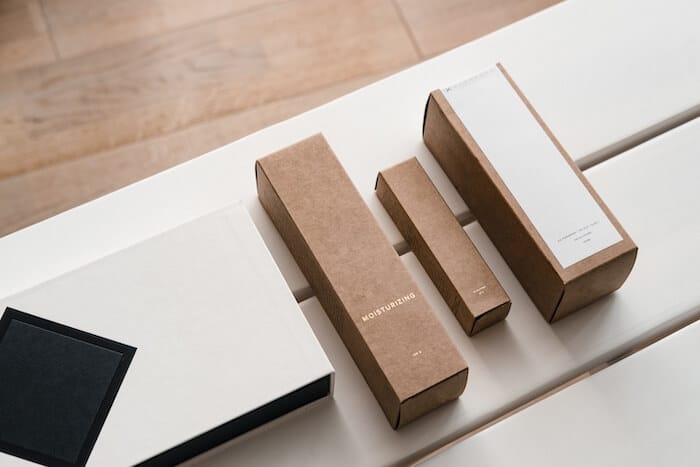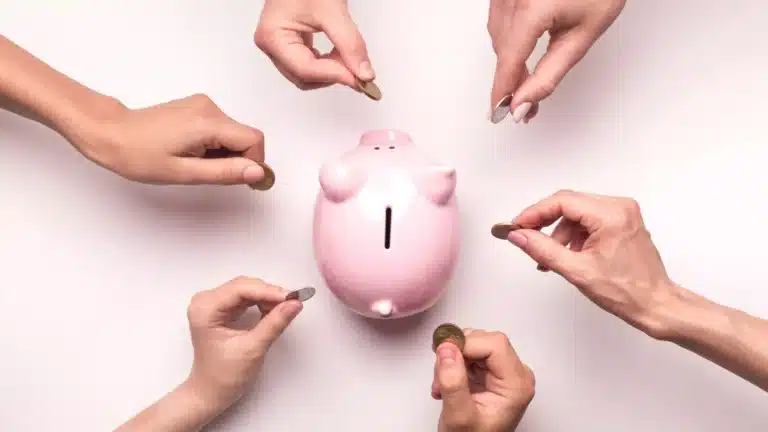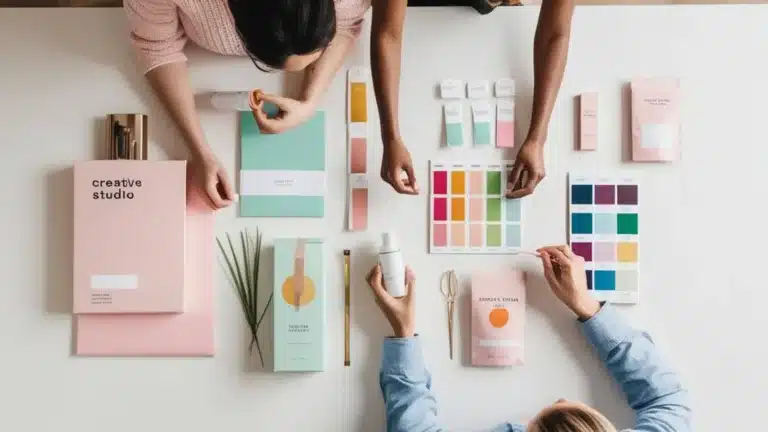What are you going to put your product in? It’s a question that many product development teams tend to put off or hand off to someone else. But that could be a fatal flaw resulting in product damage, unhappy customers, and negative brand identity. That is why any good product design includes good product packaging design.
In a recent survey, 72% of consumers said that package design influenced their purchasing decision. And this assumes the packaging kept the product in one piece on its journey from the factory to the consumer. This statistic shows that the days of putting your product in a brown box and slapping a sticker on it are long gone. Product packaging needs to be an integral part of your product development process.
This article will explain what packaging is, the three P’s of packaging (performance, perception, and price), and some suggestions to make your own packaging design a success. This information will help you improve your product’s first impression, control costs, and ensure nothing breaks on the way to your target audience.
What Is Product Packaging?
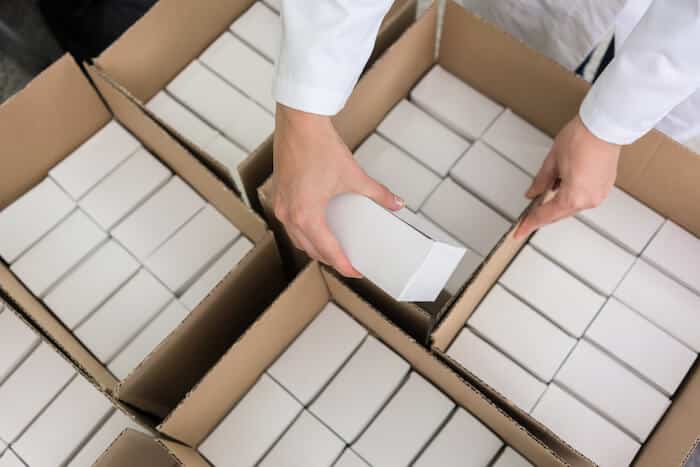
The “material around a product” part is pretty self-explanatory. Unless you own a farm and your product is apples, and you let people show up and pick their own apples, you need to put material around your product to provide one or more of the benefits listed.
Let’s unpack those benefits to understand the concept completely:
- Contain: Something has to hold your product. It may separate a single product or consolidate multiple products. It may also contain other containers. The critical thing to remember is that packaging consists of physical material that encloses your product: a box, a basket, a bag, or those frustrating plastic clamshells known as blister packs. The desired function of your packaging determines how a package contains your product.
- Protect: The fundamental purpose of product packaging is to protect the product from damage or from damaging other things. What needs to be protected varies from product to product. If you’re making a fancy towel, you just need to keep it from getting dirty. If your product is a precision optical instrument, you must keep everything aligned and dust out.
- Provide Information: In some industries, you may be able to put your product in a brown paper bag and deliver that. But, if you are producing a consumer product, you will want to use your package to convey information about your product. It could be as simple as the product name and model, along with your company name and contact info. It could also be safety information or an ingredient list. It should be information convincing the customer that this is a good product or something that the industry or the government requires.
- Market: A subset of information conveyed by your packaging solution should be information that markets and sells the product: the aesthetics of the packaging, images and words used to deliver the marketing message, and logos and images you print on the packaging or display on a sticker. And don’t forget the whole unboxing experience. This has become vital for e-commerce packagers because there are influencers on social media who make a living posting unboxing videos!
Packaging Types
Packaging can be divided up by function or by material. When we think of packaging as a container, we often think of the container touching or closest to the product. But that is just one of the three packaging levels experts have defined:
- Primary: The packaging that is closest to the product. It usually contains one “unit” of your product — a dozen eggs or one flux capacitor. Sometimes primary packaging is called retail packaging because it is what the consumer sees. This level conveys the strongest brand messaging. It is a primary package if it has a UPC bar code on it.
- Secondary: This packaging goes around the primary packaging to consolidate multiple products or provide additional protection for the product or products inside. This level often has some branding, but the focus is on sharing information that distribution and sales might need. Secondary packaging may be a padded plastic bag or shipping boxes in which you pack the primary packaging. For e-commerce products, it’s often the mailer boxes you use to ship the product from the warehouse to the customer.
- Tertiary: The highest level of packaging types, this third level groups together secondary packages for shipping or storage. This level usually has no branding, and if it does, it is there for identification only. Think of the pallet you stack products on as a typical example of tertiary packaging.
The U.S. Environmental Protection Agency breaks down packaging into seven categories by material: Glass, Steel, Aluminum, Paper and Paperboard, Plastic, Wood, and Miscellaneous. In their most recent summary, the EPA calculated that the U.S. generated 82,220 tons of packaging material in 2018. The bulk of the packaging, just around half, was paper and cardboard packaging.
Get to Know the 3 P’s of Product Packaging
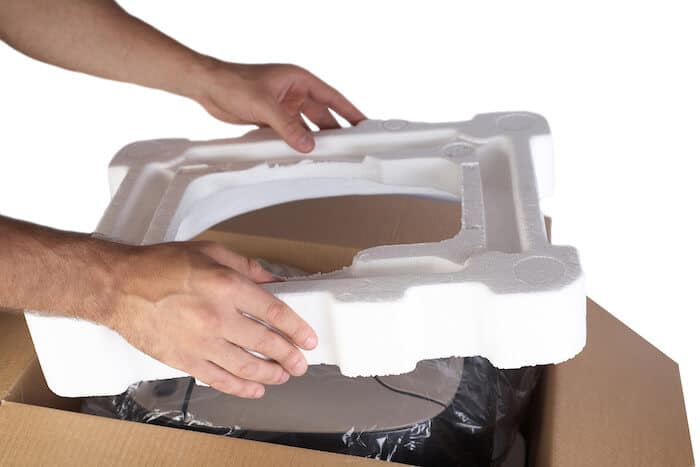
1. Performance
The performance of product packaging deals with how well the packaging meets the goals of the packaging, not including the marketing objectives. The most crucial performance aspect is to avoid damaging the product. But performance can also include safety requirements, like keeping kids away from harmful medicine. Or, it may be as mundane as allowing the products to be efficiently stacked.
Performance covers a lot of different design requirements, including safety, product durability, and sustainability. There are considerable tradeoffs between these often-competing requirements.
2. Perception
As mentioned above, many consumers make purchase decisions based on the packaging look — this is perception. The appearance, information, and overall experience of your packaging directly impact the perception of your product and your company. And remember, a good perception can be great for a brand, but a lousy perception can quickly ruin your brand identity.
3. Price
The cost of creating your packaging is just one part of the price you pay for packaging. You also need to consider the weight and volume of your packaging because the number of items you can fit on a pallet or in a container can also drive the cost of shipping. If you sell on Amazon and use Fulfillment by Amazon, they charge you by volume for warehousing your product. The volume and weight of your product may impact international freight shipping costs. And the labor required to put your product into packaging might add up quickly.
You need to look at the cost of different approaches, including tooling costs. You must pay for tools for thermoforming, wet molding, or die-cutting. This can be an expensive one-time fee, but if you are making a lot of packages, the cost per package goes way down.
A Three-Legged Stool
We, of course, want to minimize price while maximizing the positive perception and performance. This metaphor is a classic design tradeoff, and standard design practices come in handy in finding that optimal configuration. As with any design, it’s essential to know your requirements, so you can make sure you meet them. Play with the design to try and improve each of the legs on the stool. Working with an expert can come in handy — someone who knows all the options available and the pros and cons of each.
7 Suggestions for a Successful Packaging Design Process

Here are seven suggestions that apply to most any packaging effort:
1. Define the Package Journey
A common mistake when starting your product packaging design effort is to only think of packaging requirements during one portion of your product’s journey from the factory to the consumer’s hands. Think about every step from when your manufacturing partner places your product in packaging, through shipping, warehousing, what it looks like on the Amazon listing or the retail shelf, and that all-important experience when your customer opens it up.
Map out the journey and keep it handy. You will need it for suggestion three.
2. Know Your Brand Identity
Before you deliver your intended perception to everyone who will interact with your packaging, you need to know what message you want to convey. Most people think of brand identity when they’re creating their marketing plan, but remember that your product packaging is part of that plan. So make sure that everyone involved in developing your packaging solution knows the brand identity — color palette, logos, fonts, messaging, and experience. Also, ask yourself if being eco-friendly is part of your identity or if eye-catching custom product packaging is something that best captures your brand.
3. Detail Your Packaging Requirements and Prioritize Them
When balancing those three P’s — performance, perception, and price — you need more than a list of packaging requirements. Get clear on which requirements are essential and which are flexible. Reflect on the package journey and consider what you need at each stop. Do you stack your products ten high in a warehouse? Do you have to worry about the Amazon delivery person throwing the package on the front porch?
What do you want to accomplish at each interval? Document and rank your requirements.
4. Make Package Design Part of the Early Product Design Process
As we’ve mentioned a few times, you should consider your packaging, especially the primary packaging, as part of your product. If you treat it as an afterthought and leave it until the end of your product design process, you might have some big problems.
When you evaluate design ideas for your product, you should consider how they impact packaging or how packaging choices might impact your design. The earlier you uncover issues, the less expensive it is to fix them.
5. Use the Same Design Steps as You Use in Product Design
If you map out the steps in the packaging design process, they should look a lot like the standard product design steps. Let’s review them and modify them slightly for packaging design:
- Understand Requirements: We have already covered how vital requirements are, and they should be your first step.
- Create Conceptual Design: This is where you can be creative and quickly explore balancing performance, perception, and price. Sketch or make quick CAD models of your packaging with your product, showing label design options, color schemes, and different types of product packaging.
- Make Prototypes and Test: It’s imperative to make mockups of your packaging alongside your product prototypes. You might cut some corrugated cardboard or 3D-print a tool to vacuum form your blister pack. Print your labeling on paper and glue it to your product boxes. Remember, you need to consider performance as well as perception. See what it’s like to move the package and what it’s like to open it. Maybe even drop it off a table a few times with the product prototype inside to see what happens.
- Form Detail Design: Once you have evaluated options and arrived at a design, it’s time to define the details. Work with a graphic designer to produce an accurate product label. Pick materials and processes that represent every aspect of the design.
- Establish Final Design: Just as you have completed your product’s final design, you must lock down your package design. Take everything finalized about your packaging and document it for your manufacturing partners. You should create a drawing package that captures the detailed specifications of the packaging — dimensioned drawings, a bill of materials, color and material specifications, and renderings of what the final packaging looks like.
6. Design the Box and What is On the Box
This suggestion encourages you to think about package design in its basic form. You have to design something that holds your product: the box. You also must design how your target audience perceives your product: what is on the box. Even if you are not using a box, but another packaging option, if you separate the two key elements of product packaging and give them equal priority, you will ensure that you meet your performance and perception goals.
7. Explore All the Different Types of Product Packaging
There are hundreds of different ways to package a product. And they all have advantages and disadvantages. What is important is that you don’t just start with an assumption on the packaging technology you will use and miss out on a better option. Maybe all you need is a product label on a plastic bag. Or you might use a paper bag or individually sealed pouches. Go back to those requirements and look at how each product packaging technology helps or hurts.
Lean On Experts for Product Packaging Success
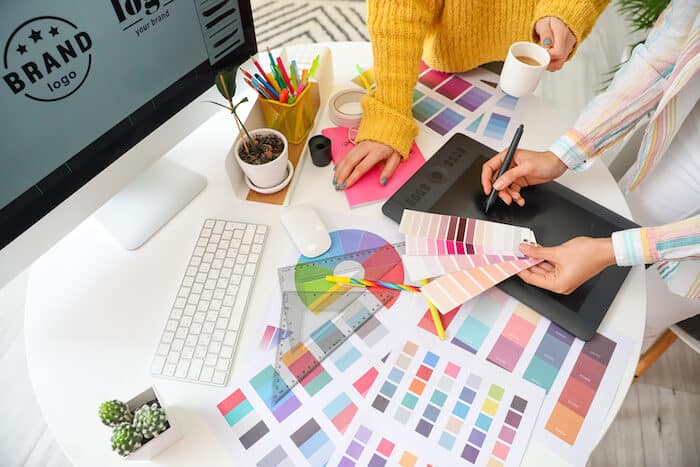
At Gembah, we are obsessed with every part of the product prototype development process, including product packaging. Our platform includes tools to help you capture your project plan and conduct the research you need to define the right packaging. And our expert database is the perfect first stop to find those packaging wizards who can help develop a design that complements your product design. So don’t wait. Reach out today — we love to talk about packaging.
